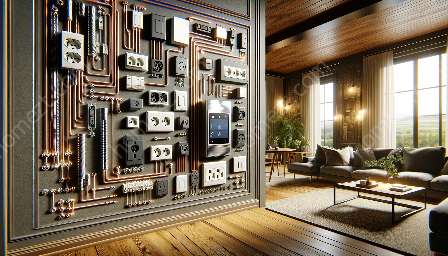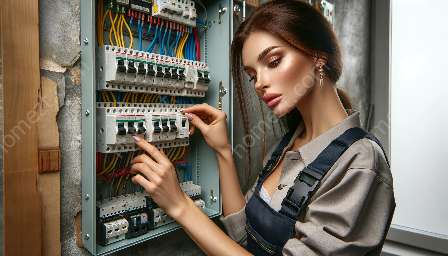Grounding and bonding play crucial roles in ensuring the safety, functionality, and compliance of electrical systems in homes and commercial buildings. As an electrician or provider of domestic services, it is essential to have a deep understanding of these concepts to ensure the proper installation and maintenance of electrical systems.
The Importance of Grounding and Bonding
Grounding refers to the practice of connecting an electrical circuit or equipment to the earth or to a grounding electrode conductor which is connected to the earth. The primary purpose of grounding is to provide a safe path for electrical current to travel in the event of a fault, such as a short circuit or ground fault. Without proper grounding, electrical faults can lead to fires, electric shock hazards, and damage to electrical equipment.
Bonding involves connecting metallic and non-current-carrying parts of an electrical system together to ensure electrical continuity and to prevent the buildup of dangerous voltages. By bonding metal components, such as enclosures, conduits, and structural steel, the risk of electric shock and fire hazards due to potential differences between metal parts is minimized.
Both grounding and bonding are essential for creating a safe and reliable electrical system, and they are fundamental requirements outlined in the National Electrical Code (NEC) and other relevant electrical standards.
Methods of Grounding and Bonding
The methods of grounding and bonding vary depending on the specific requirements of the electrical installation and the type of building or structure. Some common methods include:
- Grounding electrodes, such as ground rods, used to establish a connection to the earth
- Equipment grounding conductors, which provide a path for fault currents to return to the electrical source, enabling overcurrent protection devices to operate
- Bonding jumpers, straps, and clamps used to connect metal enclosures and other components to ensure electrical continuity and safety
Proper installation and maintenance of these grounding and bonding methods are essential to ensure the effectiveness of the electrical system during normal operation and in the event of electrical faults or emergencies.
Benefits of Proper Grounding and Bonding
Understanding and implementing proper grounding and bonding practices offer numerous benefits for electricians and domestic service providers, as well as building occupants:
- Safety: Proper grounding and bonding reduce the risk of electric shock, electrical fires, and equipment damage, creating a safer environment for residents and occupants.
- Compliance: Adhering to the regulations and standards related to grounding and bonding ensures compliance with electrical codes and regulations, reducing the risk of legal and safety violations.
- System Reliability: Well-maintained grounding and bonding systems contribute to the overall reliability of electrical systems, minimizing the risk of power loss and equipment failures.
- Equipment Protection: Proper grounding and bonding help protect electrical equipment and devices from damage caused by transient voltage and electrical faults.
In conclusion, grounding and bonding are integral aspects of electrical work in both residential and commercial settings. As an electrician or provider of domestic services, it is essential to prioritize a thorough understanding of these concepts to ensure the safety, compliance, and functionality of electrical systems.




















































